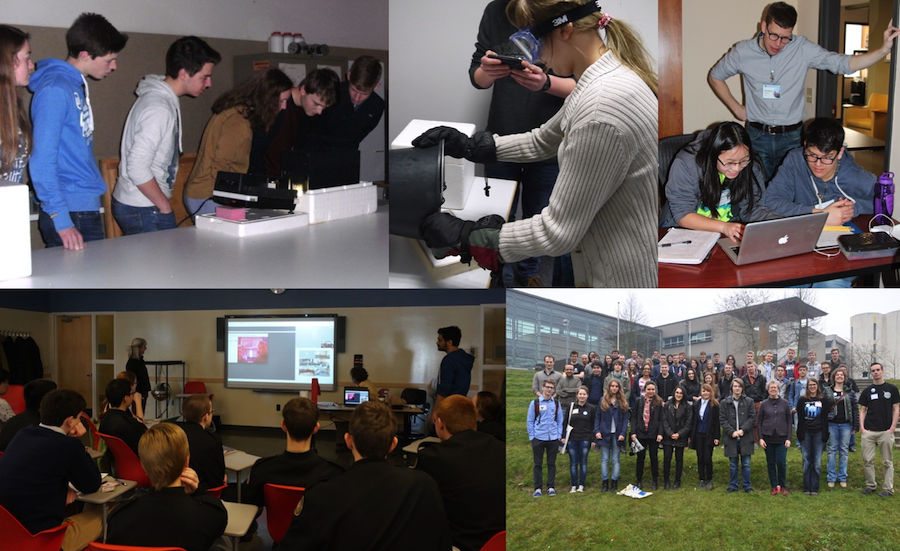Tidings from the 2015 IceCube Masterclass
The second edition of the IceCube Masterclass took place on Wednesday, March 18, at nine institutions in the US and Europe, and on Saturday, March 14, at the University of Ghent. All in all, 175 high school students analyzed IceCube data in the search for astrophysical neutrinos and cosmic rays.
The IceCube Masterclass was launched in May 2014, with five IceCube institutions in four cities in Europe and the US. This year, both the number of host institutions and participants doubled.
During the first edition, students contributed to a collaborative and guided research activity to replicate the discovery of astrophysical neutrinos by the IceCube Collaboration, a result published in November 2013 in Science. This year, the students could also replicate a second result of the collaboration, a measurement of the cosmic-ray energy spectrum.
The masterclass is an intense day of activities, but students have shown their interest and passion for science and IceCube. “It is really interesting! We are discovering a lot of new things,” commented a student in Brussels. While in Madison, a student said just before leaving, “I’m not tired, I could go on for five more hours. I just love these topics!”
Teachers are also very supportive and expand the experience beyond the masterclass day. “Our students will further discuss the content of the masterclass in the classroom and write an essay about what they have learned,” explains Lutz Koepke from University of Mainz.

But the fun is not limited to students. “Making a new analysis for the masterclass was fun,” says Hans Dembinski at the University of Delaware. He designed the cosmic-ray energy spectrum analysis. “And seeing students working with the new analysis and enjoying it was just great! It’s very satisfying to create something on your own, I hope the students felt a bit of this satisfaction when they created their own energy spectra of cosmic rays,” adds Dembinski.
“It was a great experience for me seeing the enthusiasm of the students, and I was amazed at how fast they were able to comprehend the complex aspects of our experiment,” said Nancy Wandkowsky from WIPAC. “I especially liked the large number of female participants, and I hope that an experience like the masterclasses helps to increase the number of women in science.”
Resources produced for the IceCube Masterclass program enable teachers and also IceCube collaborators to prepare other research-based experiences. “This was our first experience with the masterclass activities, but we are planning to use them again in summer with a group of about 30 students,” explained Martin Rongen from RWTH Aachen University.
The ten IceCube institutions that participated in the 2015 IceCube Masterclass are: Deutsches Elektronen-Synchrotron (DESY) in Zeuthen; Friedrich-Alexander-Universität Erlangen-Nürnberg (FAU); Niels Bohr Institutet in Copenhagen; RWTH Aachen University; Universiteit Gent; Universität Mainz; University of Delaware in Newark; Université Libre de Bruxelles; Vrije Universiteit Brussel; and WIPAC at the University of Wisconsin–Madison, US.
The IceCube Masterclass program is inspired by the International Masterclasses program, started in 2005 by the International Particle Physics Outreach Group and supported in the USA by QuarkNet.
